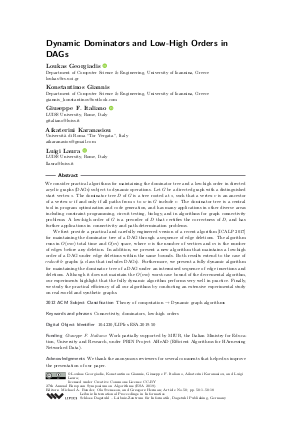LIPIcs.ESA.2019.50.pdf
- Filesize: 0.71 MB
- 18 pages

 Creative Commons Attribution 3.0 Unported license
Creative Commons Attribution 3.0 Unported license




























Feedback for Dagstuhl Publishing